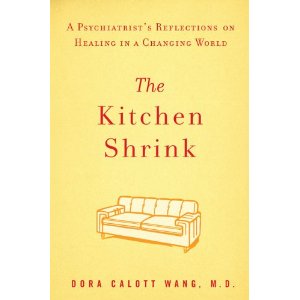 Aside from my own psychiatrist, Dr. Smith, there are few doctors that can explain a confusing and complex condition like Bipolar Disorder with such clarity as the medical director of NAMI, Dr. Ken Duckworth. Three years ago, I had the pleasure of interviewing him when I was the Patient Advocate for the Bipolar Center of Revolution Health. At the NAMI National Convention in DC last month I attended his talk on treating bipolar disorder. This is what he had to say … some simple steps that those of us living with bipolar disorder can take to stay well.
Aside from my own psychiatrist, Dr. Smith, there are few doctors that can explain a confusing and complex condition like Bipolar Disorder with such clarity as the medical director of NAMI, Dr. Ken Duckworth. Three years ago, I had the pleasure of interviewing him when I was the Patient Advocate for the Bipolar Center of Revolution Health. At the NAMI National Convention in DC last month I attended his talk on treating bipolar disorder. This is what he had to say … some simple steps that those of us living with bipolar disorder can take to stay well.
1. Start with the four basics: sleep, stress, exercise, and cognitive therapy.
One of the reasons I respect Dr. Duckworth so much is that he insists that we participate in our own recovery. Medication will only help us to a certain extent. It’s our responsibility to do the other steps: sleep a consistent 8 hours at night, lower our stress as best we can by lifestyle changes, exercise five times a week for at least 45 minutes of heart-pumping, aerobic moves (walking is good, but it’s not going to give you the antidepressant effect of aerobic workouts), and practicing cognitive-behavioral therapy so that we can train our thoughts not to leave such a huge mess for us to clean up.
2. Invest in loving, trusting relationships.
It’s best to nip the hypomanias and manias in the bud before they develop into bona fide cycles. Unfortunately we’re not able to do this job all by ourselves. Because the extra shot of energy feels great. According to Dr. Duckworth, half of persons with bipolar disorder don’t know that they are ill when symptoms appear. Which is why trusting, loving relationships are so essential to our recovery. OTHERS recognize our manias well before we do.
I’ll always remember the time my editor, Holly (I can say this now because she … sniff sniff … is no longer with Beliefnet), sent me a loving email that showed concern that I was manic. She listed very specific things, like … well … publishing 8 posts a day, wanting to be the next Barbara Walters as I’d take my video software program on the road and interview four or five people a day on how they stay out of depression, and a few more QUILT SIZE red flags that I was on my way to crashing big time. I printed up her email and brought it with me to my next doctor’s appointment.
“Yep, you’re definitely manic,” Dr. Smith said upon reading Holly’s email. “And you are very lucky to have her in your life,” she added. It takes guts to confront a friend with very visible symptoms and try to intervene so that she doesn’t have to fall as far. The email stayed in my medical chart as a useful document on how my hypomania looks.
3. Track your mood.
Next to develop loving relationships, one of the other most powerful tools to stay better is to track our mood. During our NAMI session, the participants discussed several mood trackers. A favorite was Liz Miller’s “Mood Mapping.” One I featured earlier on Beyond Blue is James Bishop’s Optimism software. I used it for a month or so and found it very helpful. If I was a more organized or technical person, I would still be using it. But I tend to gravitate to paper. So I keep a notebook in which I jot down, upon waking, how many hours I slept, a number to indicate my mood (5 means packing my pajamas for the psych ward and 0 means relatively sane), and any stressors or reasons why my mood is bad or good. For example, if a certain discussion I had with a relative is bothering me, I’ll jot that down, as well as if I went to therapy, saw my doctor, or did anything else to improve my mood. Oh, and I also record my period. Sorry, I know you guys hate it when we go there, but my menstrual cycle is definitely connected to my mood, so I have to document it.
4. Design some speed bumps.
We all are hoping for long-term health and sanity, yes. But what about those short-term messes? When you wake up with so much anxiety you don’t know if you can drive the kids to school. What do you do then?
You get a plan, that’s what you do.
Sometimes this means temporary meds, like benzodiazepines, to numb you a tad until you get to a better place where you can be more proactive. We had an interesting discussion at NAMI regarding benzos. Persons with a past of substance abuse should not use this kind of band-aid. I was thrilled to hear Dr. Duckworth say that. They are not long term meds for anyone, but especially for those persons like myself that have difficulty doing anything in moderation. Even moderation. For me, my speed bump might include an extra workout. If I swam for an hour in the morning, I’ll go for a run in the afternoon. Or I’ll hit a prayer service, or call a friend, or breathe into a paper bag until I can slow down my breathing.
* Click here to subscribe to Beyond Blue and click here to follow Therese on Twitter and click here to join Group Beyond Blue, a depression support group. Now stop clicking.

